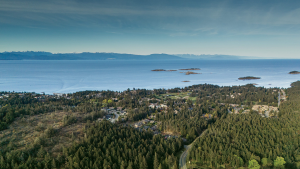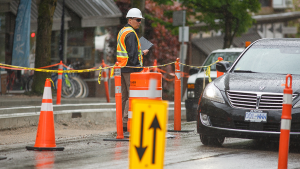The Village of McBride in Northern B.C. is developing a green solution to its antiquated sewage treatment problems.
Infrastructure
Northern village’s discharged water to sustain wetland
The Village of McBride in Northern B.C. is developing a green solution to its antiquated sewage treatment problems.
The plan will alleviate the immediate problem, while enhancing the quality of water discharged into the Fraser River as well as create long term community benefits.
The idea is to use water discharged from an upgraded sewage treatment system to create and sustain a rich wetland habitat, woodlots of native tree species and a year round recreation area for visitors and residents.
The estimated cost of turning the vision into reality is $4 million, it could take three to five years to complete.
“That’s because every step requires substantial environmental study,” explained Margaret Graine, economic development officer for McBride
Much of the necessary funding is in place and promised including contributions from various branches of the provincial and federal governments and the Northern Development Initiative Trust.
McBride, is a small mountain community about 207 kilometres east of Prince George along Highway 16 toward Jasper, Alberta.
It was Graine’s idea to expand the scope of the project beyond just a new sewage treatment lagoon to include a broader environmental and business perspective and thereby help secure financing.
“The situation now is that McBride has a single cell treatment lagoon built in the early 1970s,” outlined Christopher Morgan, who with Bob Radloff, consulting engineer of record with R. Radloff & Associates Inc. in Prince George, represent the village on the project.
The lagoon was originally developed for a second treatment cell to be added, but that never happened.
“As a consequence, there’s been a substantial build up of sludge,” said Morgan.
When a second cell comes online, probably next spring, the existing cell can be de-sludged, he explained.
Exacerbating the problem is McBride has a limited storm water collection system and the extra volume has ended up in the sanitary sewer.
A project to separate the water sources is underway.
A third storage lagoon is to be designed to provide additional retention time.
But it is what McBride plans to do with water when it’s ready for discharge that separates the project from the norm. The environmental component will see the discharged water used to create a shallow lake and wetland for birds and wildlife.
Woodlots of trees including birch, willow and spruce will be planted to take up any remaining nutrients.
A park will also be created with about three kilometres of trails, informative signs about the eco-systems created and access to the Fraser River.
Morgan noted the proposed system is low-tech, requiring little maintenance.
No additional treatments are needed and the system will be largely gravity fed.
“By the time we’re done, if there is any discharge at all into the Fraser River it will be of far higher quality,” he said.
The Sandman Inn McBride is a partner in the village’s initiative.
The hotel chain owns much of the approximately 28 hectare site proposed for the development and was quick to recognize its long term potential, said Graine.
Graine began examining the sewage treatment dilemma from a different angle because the village had no money for the work.
The McBride concept emerged from research of approaches taken by diverse groups within Canada and around the world.
“We had to look at what we’re doing to the environment today and the impact on the Fraser River,” she explained. “This plan is self sustained. Nature is doing the work for us.”
Developing a tourist attraction is an added bonus.
“We want to create jobs and bring more visitors here to enjoy this part of the valley,” she said.
There were some roadblocks along the way, but the project needs to be done so we went for it, said Graine










Recent Comments
comments for this post are closed